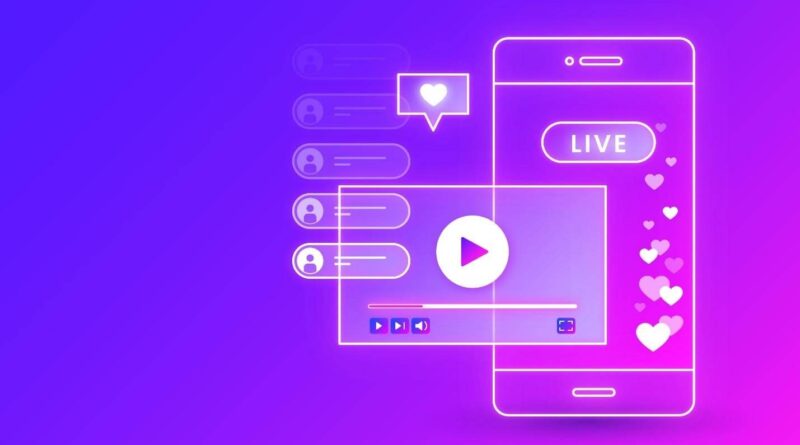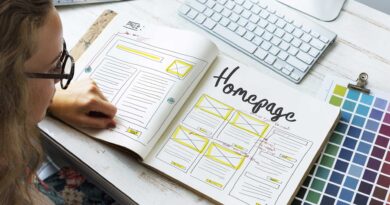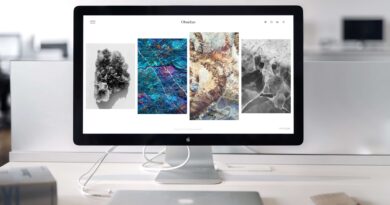Top Successful Web Usability Trends
Web usability tries to eliminate or improve the elements that generate confusion or frustration in the user. Some of the trends in usability are simplifying processes, increasing font size and prioritizing the essentials.
The usability can be defined as the ease with which users to navigate and interact with a website . In this sense, aspects such as the size of the font, the loading speed , the ease of carrying out actions or the layout of the menus , among other things, become important. All these elements play a key role in the positive or negative perception of users.
For web pages to generate a good user experience, it is necessary to work on usability.
In a previous post we told you the 5 keys to achieving a positive user experience on your website . Today we focus on web usability trends, which emphasize eliminating obstacles when browsing.
Next, we will tell you which are the main ones:
1. SIMPLICITY
Table of Contents
Our world of 2018 is turning us into rushing consumers: we seek maximum content, with minimum expression . That is, designs with fewer elements, simplified but effective.
Prioritize what is essential
We will see more and more web pages in which only the essential is shown , omitting texts and images that do not contribute anything. These exclusively “decorative” elements only serve to distract the user’s attention. The extensive contents are reserved for those users interested in learning more, so they are kept in the background.
Users positively value simple, functional and attractive experiences .
Eliminate cognitive load
The cognitive load occurs as a result of making users face a confusing web pages, with innovative designs too, too many choices or redundant actions . All these black spots of web design reduce effectiveness and produce a negative perception in the user experience.
Users prefer:
- Balance and elegance in the face of noise.
- Eliminate distractions and avoid ambiguities.
- Get rid of distractions.
- A focus of attention on the screen, that the message is clear and without distractions.
- Simple and clean images, with few elements that do not break with the design of the web.
- Subtle and essential animations that are not too distracting.
Therefore, white and empty space are still king . If you want something to work, surround it with nothing. The minimalism as a trend that focuses on the essentials has long life.
Simplify forms
It’s not just about not asking for irrelevant information . Forms are improved by preventing users from having to repeat their email twice or having to create a strong password with many requirements (combining numbers with uppercase and lowercase letters, for example). The goal is to keep the registration and authentication phases to a minimum to improve the user experience.
Also, the forms should offer the essential options . For example, those that force the reason for a query to be marked in a drop-down should be avoided.
2. DESIGN TO READ
Large fonts
Increasingly, a larger font size is used to facilitate reading and thus attract the attention of the user. The use of typography with large and bold fonts is widely used to increase the readability and readability of the contents .
Highly readable sites share these techniques:
- Simple and clear typefaces with serif or sans serif options, including regular weights and uniform kerning.
- The text size is slightly larger than expected, often starting at 16 points for normal text.
- Exaggerated paragraph spacing.
- Text blocks are surrounded by large margins with lots of white space
Creative use of bold
Bold, extrabold: bold are on the rise.
Bold type stands out against the background and directs attention . Bold typeface is anything that screams “read me.”
The simple and basic use of bold type doesn’t have to be boring, it can include something unexpected, like a fun typeface, a colorful fill, or be too big or small to attract attention.
3. DESIGN TO SAVE TIME
The design to save time to the user (time saving design) continues to be a notable trend in 2018 as it is an important part of the UX.
Reduce loading speed
Loading speed is the workhorse of many web pages . Keep in mind that less and less time is spent deciding whether or not to stay on a website: 3 seconds if the page does not load.
The optimization of the graphic content is vital to avoid abandonment. In 2018, icons gain ground as a graphic resource because they weigh little and speed up the web.
To improve the user experience when placing videos, images or effects on a web page, care must be taken with loading times . Some techniques that are being seen more and more are micro-interactions, hover effects, and parallax effects.
The microinteractions only produce a change when the user interacts with the page. The hover effects are activated when the user hovers over an image. The parallax effects are movements of web elements that activate the scrolling.
Faster browsing
It’s about creating intuitive browsing experiences that reduce friction, save time, and allow the user to achieve their goal in a limited number of steps . Therefore, it is convenient that the navigation and the main content are visible at the first glance. And also that the site orients or guides the user during navigation and anticipates their needs.
Skeleton design
Skeleton design is another trend in web usability that is gaining followers. Using the skeleton design technique, the pages are loaded in stages , from the simplest to the most complex, providing a great improvement in web usability. So you will see the structure of the page first and then the content, as if they were modules that act independently.
4. BET ON BALANCE
Although multimedia elements are gaining prominence, the design must be balanced to communicate through a fair combination of text, images, graphics and multimedia resources . This helps focus the user’s attention and improves web usability.
We have already seen that the design must be adapted so that the user, in addition to not wasting time, guides him without making him feel that he is losing control. This is achieved if the web environment generates trust, empathy and captures their attention .
This experience is generated by designers through different elements and aesthetic effects that please and surprise the user. Gradients, duotones , illustrations, small animations, asymmetries, fonts and colors mark the design in 2018.
5. SIMPLE MOBILE INTERACTIONS
As the techniques and effects on desktop websites become more complex and demanding, mobile versions of those same websites should seek a differentiated, more streamlined, reduced, and device-centric experience. When it comes to usability and function, simplicity is key with mobile devices .
Often the mobile option requires more speed and not depending on high speed internet connections that are not always available. Simpler interfaces are easier to use when screen size is limited.
Some of the desktop-oriented layouts with complex video elements and animations should be simplified to translate to smaller screens. More and more designers are working with complex desktop layouts and implementing a simplified version on mobile .
6. PROGRESSIVE WEB APPLICATIONS
The progressive web applications together the best of both worlds: websites and applications. These do not require installation, are quickly displayed in any browser, allow local storage and can be loaded without having an Internet connection.
They also make it possible for the user to place an icon on the mobile that takes them to the web page, as with applications. However, unlike apps, they do not take up space on the device .
7. DESIGN SYSTEMS
Leverage standards
Users have learned a way to navigate and function within a website through conventional actions . The trend in web usability for 2018 is to make the most of those mental models .
It is not about eliminating creativity. The aim is to avoid the user having to experiment and learn a new way of interacting on the web page. For example, changing the place or color of the buttons to confirm or cancel works against usability.
Design, as an organism
That the design of a website is evolvable and scalable requires that it be based on standards .
The idea for a design system was formulated in 2016 by Brad Frost under the name Atomic Design . It is a concept aimed at making the construction of websites easier, at the same time that the result is consistent and robust and that it can be developed in less time.
It consists of dissecting the design in its essential and basic elements: atoms, molecules, organisms, templates and page, so that through composition and combinatorics , final designs are generated according to need.
It is also aimed at making the maintenance and evolution effort of the website more affordable in time and effort, thus avoiding the entropy to which all web developments tend over time.
These are some of the trends in web usability that we see in 2018 . All of them seek that the design does not interfere with the ease of use and navigability . The website is the company’s cover letter. A creative design is important but as long as it knows how to generate a good user experience.



